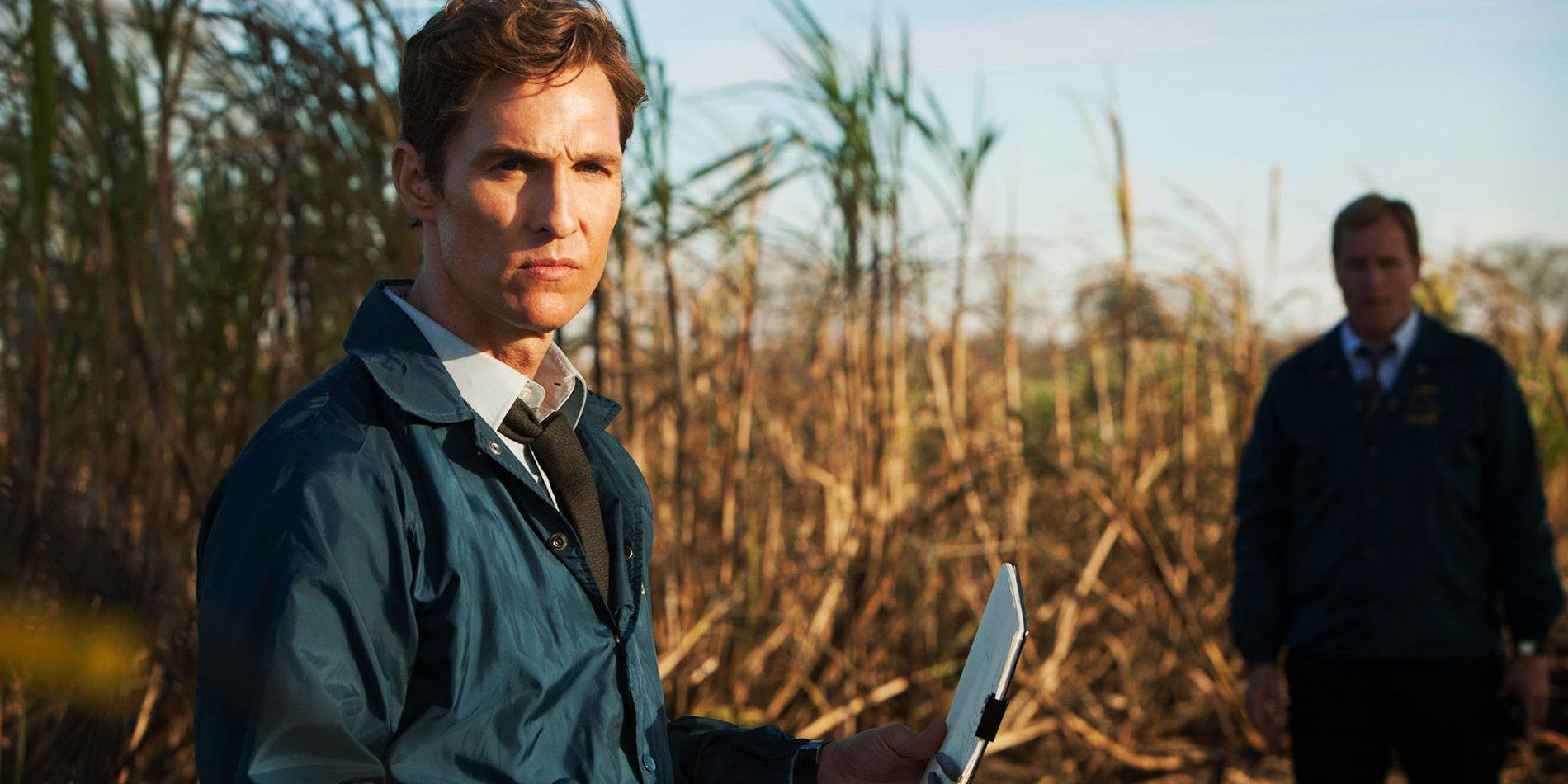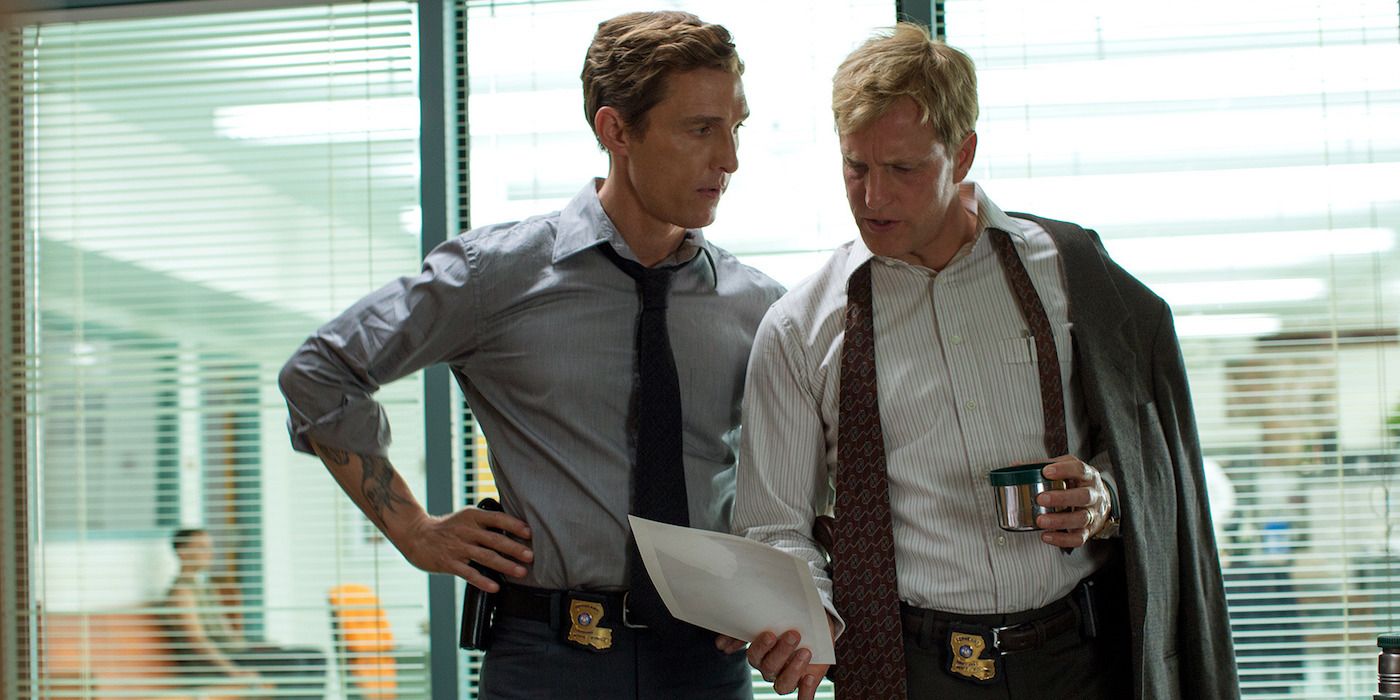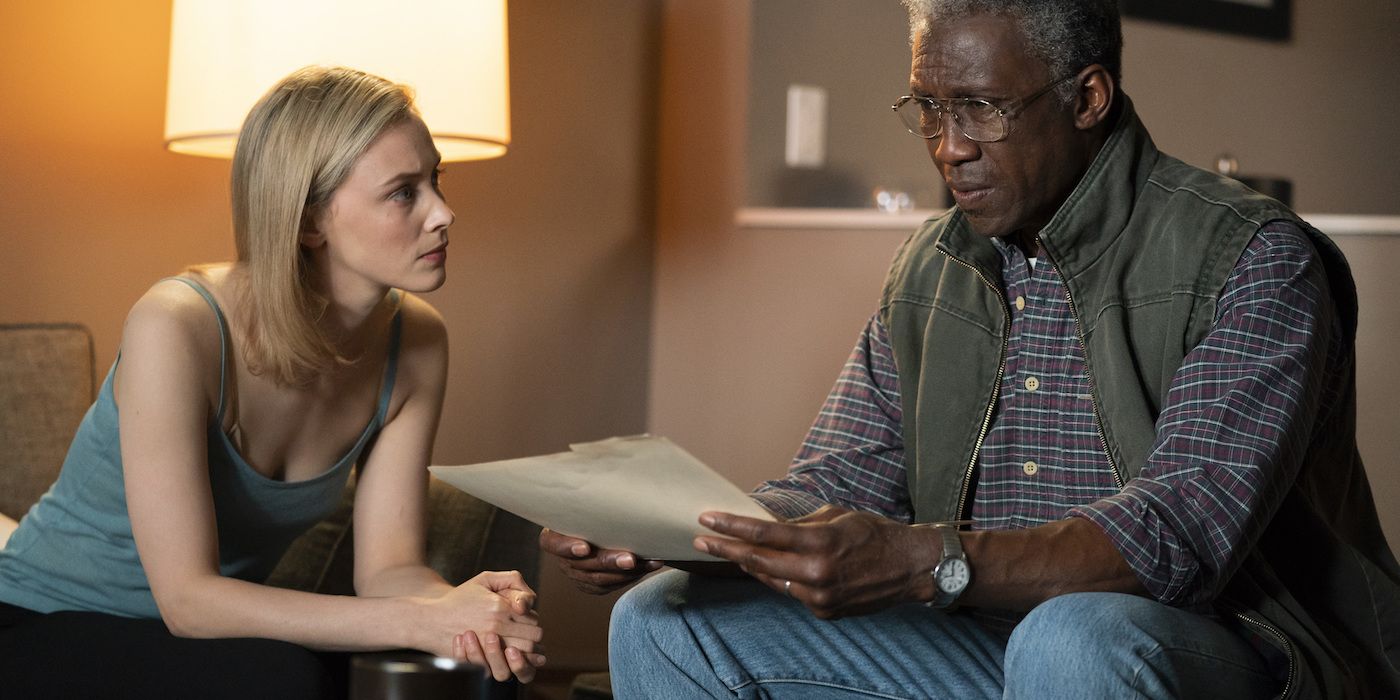WARNING: The following contains spoilers for the third season of HBO's True Detective, airing now.
One major positive of True Detective's third season is that it plays to the strengths of the first season from 2014. The adventures of Mahershala Ali's Wayne Hays and Stephen Dorff's Roland West as they try to solve the murder of young Will Purcell in the '80s and what happened to his abducted sister, Julie, over the course of the next two decades feels similar to the conspiracy Matthew McConaughey's Rust Cohle and Woody Harrelson's Marty Hart tried to expose.
With just one more episode left this year, though, we're starting to see that both seasons have not only a common theme, but also clues that speak to a common villain. It's only natural that the show's next chapter be a sequel to Rust and Marty's journey in Season 1.
RELATED: True Detective's Shared Universe May Have a Single Shadowy Villain
It's no secret everyone loves Season 1, critics and fans alike. The cast was solid and the story about a pedophile ring in Louisiana was too engaging to ignore. There was an emotional depth that Season 2 (a standalone crime procedural with a narrative that stood apart from its predecessor) lacked, which resulted in something that was more style than substance.
This is why folks were skeptical about whether Season 3 could course correct the show and provide a return to form, and so it has. Wayne and Roland have a different dynamic, but their chemistry is there, reminding us of how Rust and Marty's dysfunctional partnership worked. Returning the series' landscape to Season 1 is a logical step now that we're seeing that the family of power they went up against, the Tuttles, have a kindred spirit in the Purcell case's Hoyts.
RELATED: True Detective May Have Revealed Its Biggest Conspiracy Yet
As Season 3 progresses, the documentary an older Wayne is working on has seen the filmmaker, Elisa (Sarah Gadon), make multiple references to Season 1, which was also set in the '90s. She believes the Hoyts in the '80s, and how easily they got away with covering up Will's murder and the missing Julie, inspired a more twisted movement that led to Season 1 and the Tuttles.
Rust theorized that the straw dolls from Season 1 indicated religious symbolism and overall signs of the occult, leading him to believe that they were fighting against a cult known as the Crooked Spiral. Elisa now believes this group has spiraled into something bigger, which is why she's looking to blow the lid off both cases two decades later.
Corrupt cops and politicians, families of influence with sinister vices and ambitious detectives are common ground both seasons share. Elisa's praise of the work done by Rust and Marty simply creates a desire for more. It's clear she believes their work is unfinished and that the Purcell case is just a missing piece of the puzzle.
Season 1 ended with the Tuttles avoiding prosecution, with a groundsman at a church they owned, Errol Childress, going down for the crimes. It left Rust and Marty heartbroken, wondering if they could still continue the good fight, so a sequel could follow how their characters evolved and, most importantly, how they proceeded to lay building blocks for Elisa to follow up on in the Arkansas case with a senile Wayne.
RELATED: True Detective May Have Revealed the Fate of Its Missing Victim
Season 4 can even time-jump into the present, with Elisa working with an older Rust and Marty thanks to new evidence from the Purcell case, finally nailing the Crooked Spiral. She knows Wayne and Roland messed up by failing to follow clues from the Tuttle fiasco, so who knows, maybe we'd even get Wayne and Roland helping out.
It'd be an interesting crossover, with detectives teaming up to form a super squad to bust this criminal ring. More so, both pairs would get some sort of closure, not just for the victims, but their own lives as well.
Airing Sundays at 9 p.m. ET/PT on HBO, True Detective stars Mahershala Ali, Mamie Gummer, Stephen Dorff, Scoot McNairy, Carmen Ejogo and Ray Fisher.



